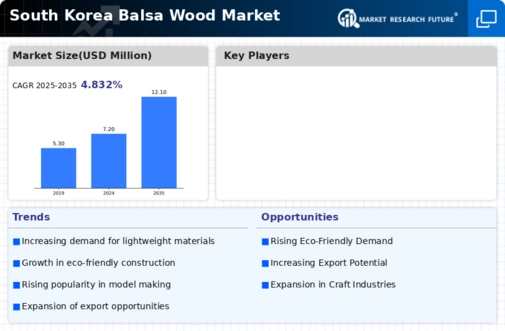The South Korea Balsa Wood Market is witnessing significant growth, driven by increasing demand across various applications such as model making, crafts, and the aerospace industry. Competitive insights reveal a dynamic landscape characterized by both established and emerging players that are actively engaging in innovative practices to enhance their market presence. Factors influencing this market include the rising preference for lightweight materials, the expansion of industries utilizing balsa wood, and favorable government policies supporting sustainable forestry practices.
As companies strive to differentiate themselves, a focus on product quality, service excellence, and sustainable sourcing has become paramount, shaping the competitive dynamics within the market.Wooseok Wood has carved a strong niche within the South Korea Balsa Wood Market through its unwavering commitment to quality and customer satisfaction. The company has leveraged advanced processing technologies and efficient supply chain mechanisms, enabling it to deliver high-quality balsa wood products that cater to diverse consumer needs.
With a well-established distribution network across South Korea, Wooseok Wood not only ensures timely deliveries but also emphasizes meticulous customer service, which enhances its competitive edge in the market. Their ability to quickly adapt to market changes while maintaining high production standards showcases their strengths, making them a formidable player within the industry.Daehan New Materials holds a significant position in the South Korea Balsa Wood Market, recognized for its comprehensive range of products such as lightweight balsa wood panels and custom-cut solutions tailored for specific applications.
The company's robust market presence is bolstered by its strategic partnerships and collaboration initiatives, which facilitate access to advanced technologies and innovative production methods. Daehan New Materials continually strives to enhance its product offerings while prioritizing sustainability through responsible sourcing practices. Their engagement in acquisitions and mergers further strengthens their market portfolio, enabling them to broaden their reach and enhance competitiveness within South Korea's growing balsa wood sector. By aligning itself with evolving market trends, Daehan New Materials has established a reputation for reliability and quality, appealing to a diverse clientele in the region.











Leave a Comment